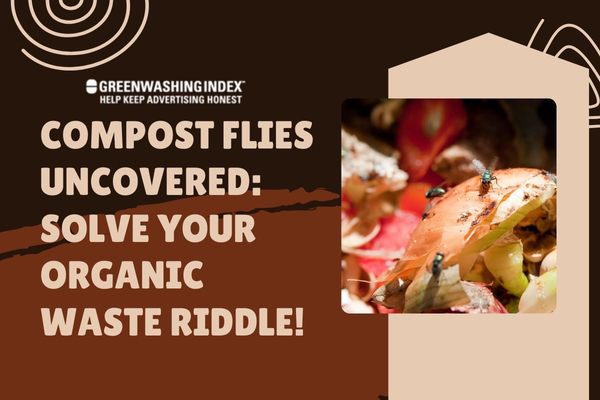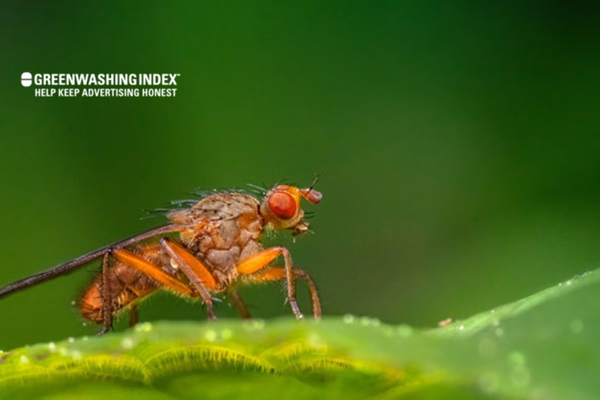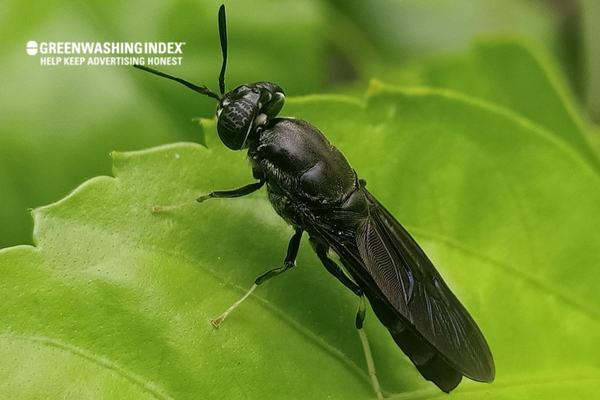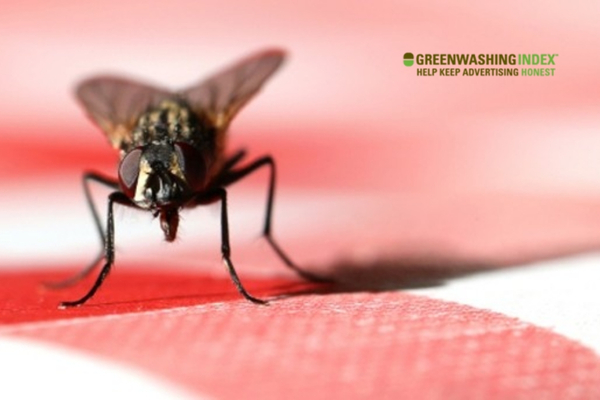

Ever opened your compost heap only to find a swarm of flies buzzing around? Dealing with compost flies can be frustrating, to say the least. It’s like these tiny winged creatures know exactly where their next feast is, turning your earnest recycling efforts into a bit of a bug battlefield.
But don’t worry! If you’ve ever been bugged by these pests and asked yourself why they’re so interested in your compost pile, you’re in the right place to get some answers.
Are you curious about why flies are drawn to your compost like magnets? It’s all because they’re on the lookout for delicious decaying matter to munch on, and the compost pile is an all-you-can-eat buffet for them.
And once they settle in, they lay eggs, which later hatch into more flies—turning your pile into fly central! Understanding what attracts these flies and how their life cycle intertwines with your heap can help you keep them under control.
What You’ll Benefit From Here:
When I think about compost flies, I’m reminded that every creature has its place in nature. These tiny insects have a fascinating life cycle that unfolds right in our compost piles. Let me walk you through their world.

Compost flies are small insects that thrive in environments where organic matter breaks down—they love our compost heaps because they’re like all-you-can-eat buffets for them. Here’s how their life cycle works, step by step:
Step 1 – The Egg: It all starts when a female fly lays her eggs in the compost. This is usually on or near decaying material full of nutrients.
Step 2 – Larva Emerges: From these eggs, hatch larvae, which most of us call maggots. They’re tiny worm-like critters that start to munch on the decomposing waste immediately.
Step 3 – Growing Up: As they eat, these larvae grow and shed their skin several times—this process is called molting.
Step 4 – Pupa Stage: After some time—and quite a bit of eating—the larvae turn into pupae. Don’t let their quiet look fool you; inside those pupae, big changes are happening as they transform into adult flies.
Step 5 – Adult Flight: Finally, out come the adult flies from the pupal cases—ready to start the cycle all over again by finding mates and laying eggs!
Now, let’s dig into why your garden’s compost pile is such a hot spot for these flies:
You see, every aspect of your pile—from the stinky smell to its warmth—is just what compost flies are looking for when setting up a home. It might be irritating dealing with them at times, but remember, they play an essential role in breaking down plant material back into the soil!
Also Read: DIY Composting Toilet Guide: Build Cheap, Eco-Friendly Now!
When I work in my garden, I often notice small flies buzzing around my compost bin. To understand them better, let me share with you the different kinds of compost flies that you might come across.

First off, fruit flies are the tiny ones you’ve likely seen flying around ripe fruit. They love sweet, decaying organic matter. In compost, they lay eggs, and their larvae help break down the waste.
Another type is the fungus gnat. These guys are small, like fruit flies, but have darker bodies. They prefer composts high in moisture and organic material that is breaking down into rich soil.
Then there’s the soldier fly, a larger type of fly with a shiny body. Soldier flies are great because they can decompose waste really fast. They’re not into our living spaces much, so they tend not to bother us humans.
Each kind of fly actually helps our compost heaps a lot! Here’s how:
Despite being a bit annoying sometimes, these critters have an important job. By dining on decomposing matter in our composts, they recycle nutrients back into the soil, which makes plants happy and gardens lively!
Also Read: Composting Orange Peels: The Hidden Truth
When I try to keep flies away from my compost, I aim for a well-balanced mix of materials. A good balance is like a recipe to make sure my compost works well without becoming a home for too many compost flies.
To make sure my compost pile stays healthy and doesn’t attract too many flies, I focus on what goes into it:
A good mix usually has more browns than greens – about two or three parts browns to one part greens. When the balance is just right:
I also make sure that the pieces are small enough. Big pieces take longer to break down and can attract more flies.
Adding layers helps, too. I put down some browns and then some greens on top, repeating these layers like making a lasagna.
If there are still too many flies around my compost pile, here’s what I do:
Following these steps has helped me keep those unwanted guests away while still turning organic waste into useful soil conditioners!
Also Read: Composting Cheese: Can It Be Done? Complete Guide
Dealing with compost flies can be a real headache. But I’ve found some ways to keep these pesky insects away from my compost, and I’d like to share them with you. These steps help keep my compost healthy without harming the environment.

Let’s look at natural ways to fight off flies. We want our compost to be great, but flies? Not so much!
Now, let’s talk prevention – how do we stop problems before they even start?
By following these tips and staying attentive, I’ve been able to cut down on the number of unwanted guests buzzing around my organic recycling efforts!
Also Read: Eco-Friendly Paper Towels: A Composting Guide You Need
When we talk about flies in our compost, it’s normal to feel a bit worried. After all, these buzzing insects aren’t usually welcome guests. But let’s take a closer look and get to the bottom of what compost flies really mean for us.
First off, many wonder if these little critters can make us sick or become a big bother. Here’s what I’ve found out:
In short, while compost flies are generally not dangerous by themselves, too many of them can be more than just an irritation; they might point out that something’s not quite right with the way we’re handling our organic waste.
Now let’s think about their influence on plants near our compost piles:
No, it’s tough to get rid of compost flies totally. They’re part of the natural breakdown process, but you can lessen them a lot.
Yes, things like meats, dairy, and sweet fruits are like a dinner bell for flies. Stick to mostly veggie scraps and yard waste to keep them at bay.
Quickly cover any new food scraps with dry leaves or straws. Also, stir your pile regularly. This helps keep those pesky compost flies away.

Don't let aphids, slugs, and caterpillars ruin another plant. Take back control with simple, natural methods that actually work.